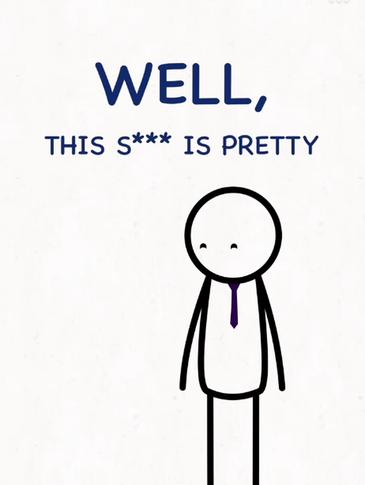You ever ass********ed a president?
You ever assassinated a president? No? Well this sh** is pretty fun. And easy. Let's say the president is about to give a speech somewhere. The Secret Service always arrives a few days before the president to check every area. But after the search is done, most of them leave and come back 24 hours before the president appears. That's your window to sneak in. What happens next? It's pretty simple. You'll check for blind spots outside of the Secret Service search radius.
And that's where you'll make your setup. Won't I get caught? You might, which is why you'll stay hidden during the speech, and only come out when you're absolutely sure that you're ready. But what if I still miss, like a little b****? That's really unlikely. Only a huge f***ing idiot would miss their target from a hundred feet away and just hit an ear or something. But if that actually happens, then in that case, you're probably f***ed. What do I do then? It depends on how far you are. If you were at your setup in person, then you're seriously f***ed.
Before you even get the chance to escape, the secret service is going to have you laid out. What's the other solution? Well, if you were remotely set up, then it's not really an issue. You can activate it and be as far as you want. Just use a remote trigger. But won't I still get caught?
Not if you do it properly. The only way they can connect anything to you is either through your fingerprints or through security footage. If you use gloves and wipe everything down, you won't leave any prints behind. As for the security cameras, you need to plan for the weeks ahead. Check every single corner for cameras so that you know which blind spots to take to avoid being recorded. That's it? I'll get away with it just like that? Actually, it's pretty f***ing hard. Don't try this at home.
You ever ass********ed a president?
You ever assassinated a president? No? Well this sh** is pretty fun. And easy. Let's say the president is about to give a speech somewhere. The Secret Service always arrives a few days before the president to check every area. But after the search is done, most of them leave and come back 24 hours before the president appears. That's your window to sneak in. What happens next? It's pretty simple. You'll check for blind spots outside of the Secret Service search radius.
And that's where you'll make your setup. Won't I get caught? You might, which is why you'll stay hidden during the speech, and only come out when you're absolutely sure that you're ready. But what if I still miss, like a little b****? That's really unlikely. Only a huge f***ing idiot would miss their target from a hundred feet away and just hit an ear or something. But if that actually happens, then in that case, you're probably f***ed. What do I do then? It depends on how far you are. If you were at your setup in person, then you're seriously f***ed.
Before you even get the chance to escape, the secret service is going to have you laid out. What's the other solution? Well, if you were remotely set up, then it's not really an issue. You can activate it and be as far as you want. Just use a remote trigger. But won't I still get caught?
Not if you do it properly. The only way they can connect anything to you is either through your fingerprints or through security footage. If you use gloves and wipe everything down, you won't leave any prints behind. As for the security cameras, you need to plan for the weeks ahead. Check every single corner for cameras so that you know which blind spots to take to avoid being recorded. That's it? I'll get away with it just like that? Actually, it's pretty f***ing hard. Don't try this at home.

Why this video went viral:
1. A shocking hook in the very first line.
It opens with the provocative question: “You ever assassinated a president?” — an immediate attention-grabber that breaks all expectations of typical content. This kind of opener stops the scroll instantly. TikTok's algorithm rewards high watch time and engagement, and nothing boosts curiosity more than an outrageous, unexpected intro.
2. Satirical tone and dark humor.
While the subject sounds serious, the delivery is filled with irony, exaggeration, and casual profanity. It's clear the narrator isn't genuinely instructing anyone — instead, it’s a mockery of edgy “how-to” content. This tonal ambiguity invites debate, shares, and repeat views, as everyone interprets it differently: some see comedy, others danger.
3. The “fake tutorial” format works.
The structure mimics that of a traditional how-to video, but the absurdity of the instructions and the final line — “don’t try this at home” — flips it into parody. It's a clever subversion of TikTok's huge volume of DIY and explainer content, making it both familiar and provocative, a combination that thrives on the platform.
4. Strategic disclaimer protects the content.
The caption reads:
“This is NOT a tutorial 😭🙏🏼 This video does NOT endorse any pv or party”
This kind of disclaimer is often used to walk the line between free expression and policy compliance. It signals to moderators and viewers that the creator is aware of the line and is technically not crossing it — a tactic that often allows controversial videos to stay up long enough to go viral.
5. Emotional virality factors:
Shock – “I can’t believe this is online”
Dark humor – “This is insane… but hilarious”
Polarization – “This should be banned” vs “Relax, it’s satire”
Engagement magnet – people are driven to comment, debate, or report
🧠 What does this tell us about the audience?
This video succeeds because it taps into a broader trend: people are bored of safe, predictable content. TikTok’s algorithm promotes content that sparks strong emotional reactions, even if they’re uncomfortable. And that’s what this video delivers — curiosity, laughter, fear, offense, and fascination — all at once. When a viewer is unsure whether to laugh, report, or share it with a friend, that video is doing something right for virality.
In short, the video doesn’t go viral despite being controversial — it goes viral because it is. It’s walking the fine line between commentary and chaos, between satire and seriousness, and that’s exactly what TikTok’s viral machine feeds on.
If you’d like, I can create a similar analysis for other videos from the same creator (like the money laundering one, the Coca-Cola brand breakdown, or the lobbying explainer), which use the same storytelling tools but stay further away from content moderation risk. Let me know.
Did you enjoy this video?
Leave your email address and we’ll deliver the best content from top business minds in the world — in the category you choose.

